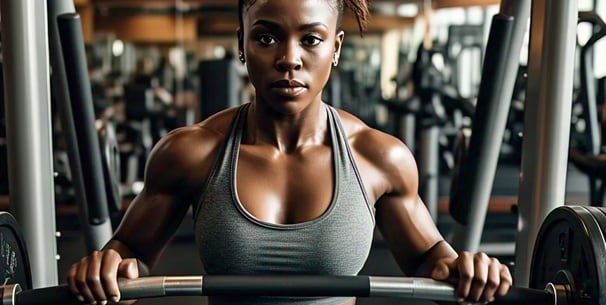CHEST MUSCLE


Building a Strong Chest: Upper, Middle, and Lower Chest Workouts at the Gym
A well-developed chest is one of the most sought-after goals in fitness. A strong chest not only enhances the overall physique but also plays a crucial role in upper body strength. The chest muscles, or pectorals, consist of different sections that can be specifically targeted with various exercises. Understanding how to effectively train the upper, middle, and lower chest can help you achieve a balanced and well-defined chest. In this article, we will explore the anatomy of the chest muscles and provide the best exercises to develop each section effectively.
Understanding Chest Muscles
The chest muscles primarily consist of the pectoralis major and pectoralis minor. The pectoralis major is the larger of the two and is divided into three main sections:
Upper Chest (Clavicular Head) – This section is located near the collarbone and is responsible for movements that lift and bring the arms upward.
Middle Chest (Sternal Head) – This is the largest section and is activated in most standard chest exercises.
Lower Chest (Lower Sternal Fibers) – This section is located towards the bottom of the chest and is responsible for movements that push downward.
Now that we understand the different sections of the chest, let’s explore the best exercises for each part.
Upper Chest Workouts
The upper chest is primarily targeted through incline movements. Developing this section helps create a fuller and more proportional chest.
1. Incline Barbell Bench Press
How to Perform:
Set an adjustable bench to a 30-45 degree incline.
Lie down and grip the barbell slightly wider than shoulder-width.
Lower the bar to your upper chest, then press it back up.
Benefits: Focuses on the upper pectoral muscles and helps build strength.
2. Incline Dumbbell Press
How to Perform:
Adjust the bench to a slight incline.
Hold dumbbells in each hand and press them upwards.
Lower them slowly back to the starting position.
Benefits: Provides a greater range of motion compared to the barbell press.
3. Incline Dumbbell Flyes
How to Perform:
Lie on an incline bench with a dumbbell in each hand.
Extend your arms out and lower the weights in an arc.
Bring the dumbbells back to the starting position.
Benefits: Isolates the upper chest for better muscle engagement.
4. Incline Machine Press
How to Perform:
Adjust the seat so the handles are at chest level.
Press the handles forward and slowly return to the starting position.
Benefits: Provides stability and consistent resistance.
Middle Chest Workouts
The middle chest is the largest part of the pectoralis major and is best targeted with flat movements.
1. Flat Barbell Bench Press
How to Perform:
Lie flat on a bench with a barbell above you.
Lower the bar to your chest and press it back up.
Benefits: One of the best compound exercises for overall chest development.
2. Flat Dumbbell Press
How to Perform:
Lie flat on a bench with dumbbells in each hand.
Press them upwards and slowly lower them back.
Benefits: Increases muscle activation by requiring more stabilization.
3. Chest Dips
How to Perform:
Hold onto parallel bars and lower your body by bending your elbows.
Push yourself back up.
Benefits: Engages both the middle and lower chest muscles.
4. Cable Crossovers
How to Perform:
Stand in the center of a cable machine with handles in both hands.
Bring your arms together in front of your chest.
Benefits: Provides constant tension on the chest muscles.
Lower Chest Workouts
The lower chest can be developed with decline movements. This section is essential for creating a well-rounded and sculpted chest.
1. Decline Barbell Bench Press
How to Perform:
Set a bench to a decline position.
Lower the bar to your chest and push it back up.
Benefits: Targets the lower pectoral muscles effectively.
2. Decline Dumbbell Press
How to Perform:
Lie on a decline bench with dumbbells.
Press them upwards and lower them slowly.
Benefits: Helps define the lower chest with greater range of motion.
3. Decline Dumbbell Flyes
How to Perform:
Lie on a decline bench with dumbbells.
Lower the weights in an arc and bring them back.
Benefits: Isolates the lower chest muscles.
4. Weighted Chest Dips
How to Perform:
Perform dips while leaning forward to engage the lower chest.
Use a weight belt for added resistance.
Benefits: Builds mass in the lower pectorals.
Tips for an Effective Chest Workout
Progressive Overload: Increase weights over time to continue muscle growth.
Proper Form: Focus on controlled movements to maximize muscle engagement and prevent injury.
Mind-Muscle Connection: Concentrate on contracting your chest muscles during each rep.
Balanced Training: Train all sections of the chest for a symmetrical look.
Rest and Recovery: Allow at least 48 hours of recovery between chest workouts.
